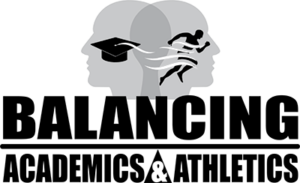
In Chapter 6 of Why It Matters: Reflections on Practical Leadership, I addressed a number of areas in which leaders must achieve balance. Not included in the chapter is a subject area requiring balance that few leaders are likely to face: academics and athletics. However, it’s a subject I faced while serving as UA’s chancellor. Based on conversations with peers at other public and private universities, the pressures I faced aren’t unique among universities engaged in nationally competitive intercollegiate athletics.
Having grown up in Arkansas, I knew how important Razorback athletics were to Arkansans, regardless of their educational background or university affiliations. Also, knowing successful athletics programs exist at outstanding academic institutions, I knew that achieving excellence in academics and athletics didn’t have to be either, or, it could be and. After becoming UA’s chancellor, when speaking to civic clubs across the state, I said we needed to be as nationally competitive in our academic fields as we had been on our athletic fields.
I asked, “Which universities do you want the University of Arkansas to be competitive with in football?” Alabama, Texas, Michigan, Florida, Ohio State, Southern Cal, and so forth were the responses. When I asked about basketball, Duke, Kentucky, North Carolina, UCLA, and Michigan, among others were mentioned. When I asked, “What about English, history, business, engineering, and physics,” there was silence until people began naming the nation’s top universities in those fields.
After reminding people no university, year in and year out, can sustain athletic excellence without achieving academic excellence, I said, “Outstanding academics and outstanding athletics are simply opposite sides of the same coin. We don’t need to choose between academics and athletics; we need to excel in both. They don’t compete; they complement.”
Over the eleven years I was chancellor, it was a challenge to balance the attention I gave to academics and athletics. When I accepted the offer to be UA’s chancellor, I told my wife we needed to attend many events involving students, performing arts and athletics. If we were going to attend football games, then we needed to do so for all sports, especially women’s sports. I reminded her women practice just as hard as the men and, when they wear their uniforms, they’re UA representatives. Woody Allen said, “Eighty percent of success in life is showing up.” So, we were going to show up. And we did!
I didn’t want to provide ammunition for people who opposed my efforts to improve the academic reputation of the university, allowing them to say I didn’t care about athletics. I needed to walk my talk. Because I claimed both were important, we needed to show up for both. Coaches will affirm I wanted them to pursue excellence in their athletic programs. Deans will do likewise regarding my expectations of their academic programs.
Intercollegiate athletics consumed a disproportionate amount of my time and attention. At least seventy-five percent of my interactions with UA trustees were related to athletics. Coaching changes, reducing the number of football games played in Little Rock, representing the Southeastern Conference on the NCAA Executive Committee, dealing with the NCAA about recruitment issues, responding to queries from sports writers, and dealing with a host of other athletic-related matters took more time than anticipated. Fortunately, relatively few controversial issues arose in academics and I was able to address athletics issues when they arose, albeit not to the satisfaction of many.
Balance—an important goal for everyone, not just leaders—is difficult to achieve and maintain. Successful leaders must work daily to achieve and maintain it. Mistakes can and will be made. I made more than I’d like to admit. At times I felt like I was a high-wire trapeze artist juggling crystal balls and operating without a net. Fortunately, I had people around me who were supportive and attentive to where I needed to focus my attention. And there were reminders that athletics wasn’t the most important thing for me to focus on, especially when I received a telephone call at 3:00 am informing me of a student’s death.
With the announcement that former UA football coach, Bobby Petrino, is UA’s new offensive coordinator, I can imagine the impact this decision had on the university community. At the heart of Petrino’s firing in 2012 were issues of integrity, character, and trust. With his hiring, what message about the balance in academics and athletics is being sent to the university community?
Texas A&M hired Petrino to be Jimbo Fisher’s offensive coordinator. Fisher was fired less than one year after Petrino’s hiring. I hope for the best for my alma mater’s reputation and for Sam Pittman’s success as the head football coach. If I were Pittman, I’d keep a sharp eye on my back.
Next Week: A Case Study on Changing a University’s Culture